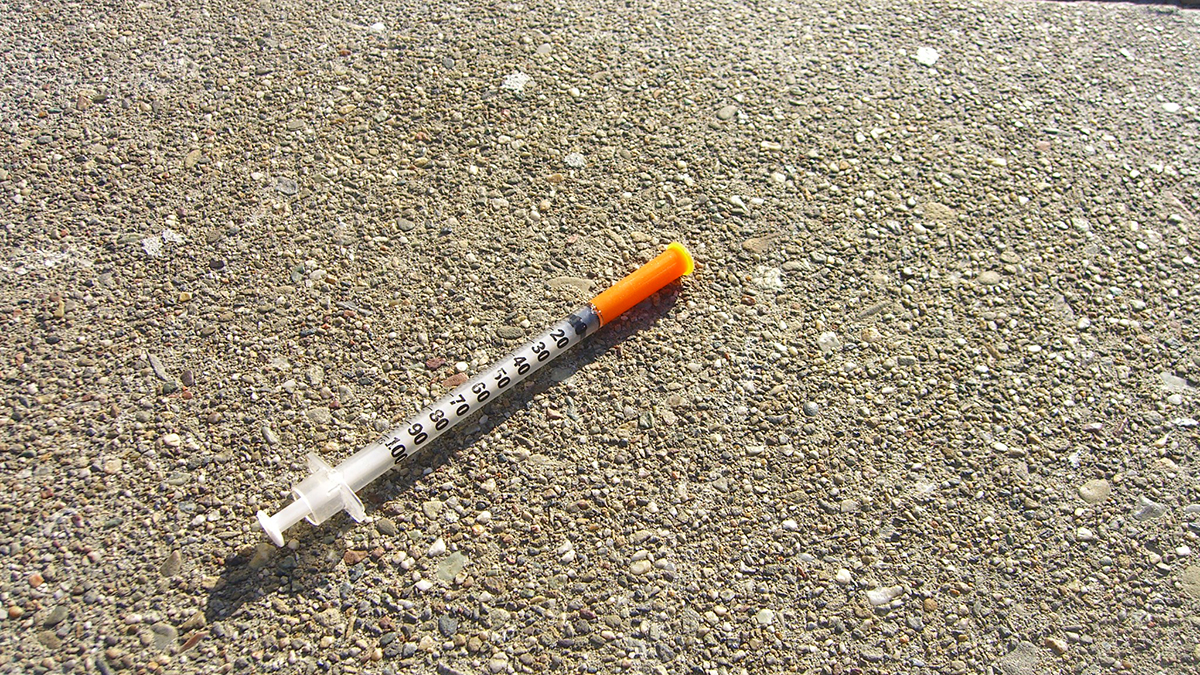 Supplied
SuppliedThere’s an opioid epidemic brewing in Western Canada. Its treatment may lie closer to the root of the problem than you think: injectable heroin.
As the fentanyl crisis continues to raze a shocking path through Alberta that has seen fatalities go from six dead in 2011 to 274 in 2015, lawmakers and doctors are in the midst of a national discussion on how to deal with a public health disaster that may soon spread to the rest of Canada. It’s this discussion that has led to the most recent development in the crisis: Health Canada’s decision last week to allow doctors to prescribe diacetylmorphine, or pharmaceutical-grade heroin, for their most extreme addiction cases.
While this may at first seem counterintuitive given that the goal of treating addiction is to get the patient to, you know, stop using the drug, it’s actually a move backed by decades of research. In a 2012 report on heroin-assisted treatment, the EU’s European Monitoring Centre for Drugs and Drug Addiction found that 15 years of research provide overwhelming evidence in support of “fully supervised self-administered injectable heroin” when treating extreme chronic heroin addictions. It led to lower crime rates among those given heroin treatment, higher rates of remaining in treatment, and improved mental and physical health. Unlike those little white pills with the Tylenol logo scraped off that your douche cousin sold you, this shit actually works.
But to really accept the merits of such a treatment plan, you have to entertain one of the major moral discussions in medicine: whether reducing harm is morally superior to doing nothing at all. I think it is, and so do a lot of doctors, bioethicists, and peeps on the block. Because it involves trading out street drugs for regulated but equally dangerous pharmaceutical agents, prescribing heroin is a form of “harm reduction” — a medical philosophy that views reducing the suffering caused by a condition as equally important as curing it altogether.
It’s hard to believe anyone would be against medical treatments reducing personal and social harm, but a whole lot of people are. In fact, the very reason why Health Canada had to make their heroin decision in the first place is because it was once legal, and then our last government decided that it wasn’t. Health Canada is simply repealing the Harper regime’s politically-driven 2013 castration of the Special Access Program (SAP), an initiative whose purpose is to allow the prescription of otherwise unauthorized medications. The program had exceptionally granted a small group of former research participants continued access to prescription heroin, but the decision was quickly cancelled by then-Minister of Health Rona Ambrose.
Last week’s policy reversal is great news for a province at the epicenter of an opioid crisis, and a sign of better times ahead for addiction treatment in Canada in general. The politicians and doctors that don’t think so seem to forget that the philosophy of harm reduction has always reigned supreme in medicine, whether they like it or not. It’s why we used to perform Cesarean sections that inevitably killed mothers, still amputate necrotic limbs to save the rest of the body, and have now legalized physician-assisted death; the ends justify the means. To do nothing in the face of suffering may well contradict the principal medical tenet of “do no harm.”
This philosophy is what leads doctors to prescribe methadone, a synthetic opioid, when treating opioid addictions. Yeah, it’s a powerful drug. Yeah, it can kill you. But methadone lets addicts replace their street drugs with a regulated pharmaceutical agent whose slow onset and long half-life makes it far less addictive and doesn’t deliver a high. Patients receiving methadone maintenance treatment can start living with a far higher quality of life, work jobs, and gradually decrease their dependency on opioids altogether. The end — a healthier member of society — greatly justifies the means — giving a drug addict drugs.
The same approach guides Insite, a world-renowned supervised injection site in Vancouver that provides drug users with clean syringes and medical attention in the event of an overdose. Its presence reduces the spread of blood-borne disease, provides withdrawal treatment, and has seen almost 5,000 overdose interventions and not a single death. And just like the nullified application for heroin prescriptions in 2013, Insite was vehemently opposed by our former Conservative government.
This dismissal of harm reduction initiatives by the Conservatives is not at all an uncommon view in Canada. I hope and assume that it comes from a place of compassion and an interest in public safety. It also comes from a place of deep misguidedness. The fear that providing individuals with prescription heroin or the equipment they need to use their drugs will put dangerous substances on the market is kind of a valid one, given the wide distribution of medical marijuana to just about anyone and its high risk prescription to, say, psychotic patients. In other words, it’s the “slippery slope” argument. And that argument is absolutely ridiculous when it comes to the prescription of heroin.
It’s pretty damn hard to be trigger-happy with heroin prescriptions the way doctors are with marijuana. Because, surprise, heroin sucks. Prescribing it would be one of the most extreme pharmaceutical interventions imaginable — using a highly dangerous and addictive substance as a last case scenario. It’s not something you’d see prescribed for day-to-day maintenance treatment. That’s what methadone is for. But if your methadone doesn’t work, and you really hope that it does, you’re shit out of luck. It’s as simple as that. For the approximate 10 per cent of the population that simply doesn’t respond to methadone treatments, regulated and supervised heroin use can keep them from taking tainted drugs or ODing during a relapse. It won’t get them off the drug, but it’ll be the first step in the long and winding road to recovery.
So if one considers that harm reduction treatments have a strong moral and practical justification, and that pharmaceutical heroin can be a valuable asset in such treatments, it may be easier to accept Health Canada’s landmark decision. It’s a good move for our nascent opioid epidemic, but one that leaves much to be done given that pharmaceutical heroin will still be absurdly difficult to prescribe, perhaps to the treatment’s own detriment.




